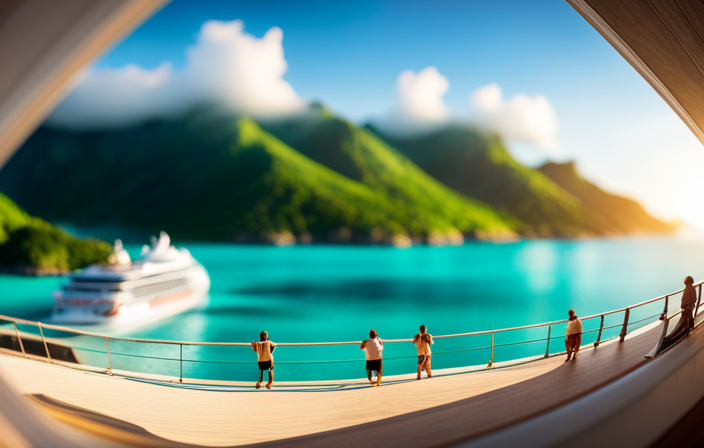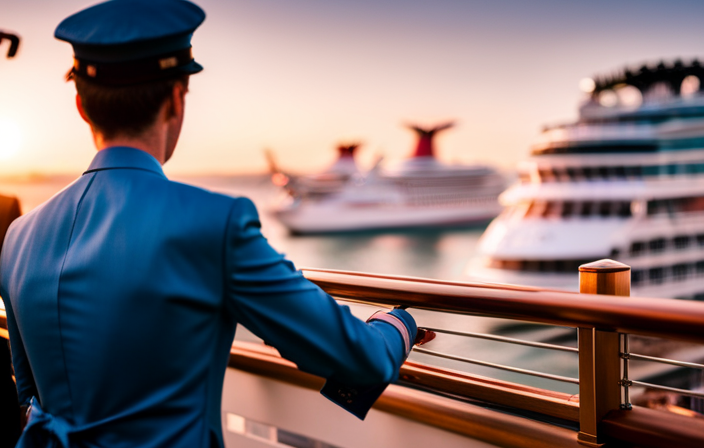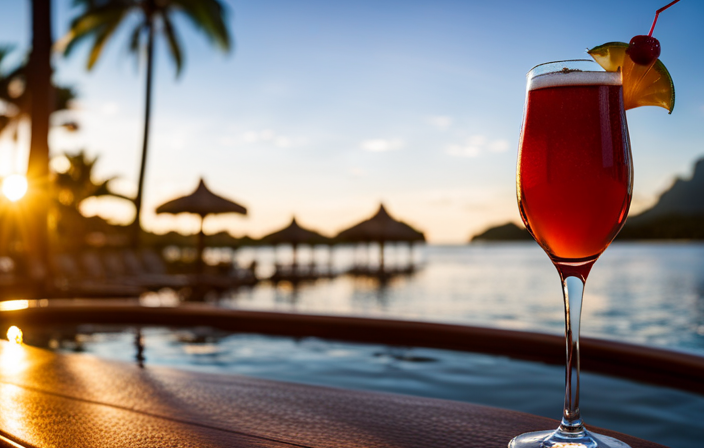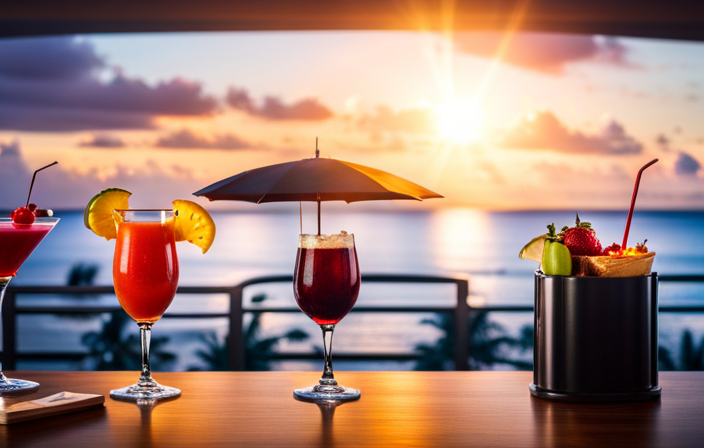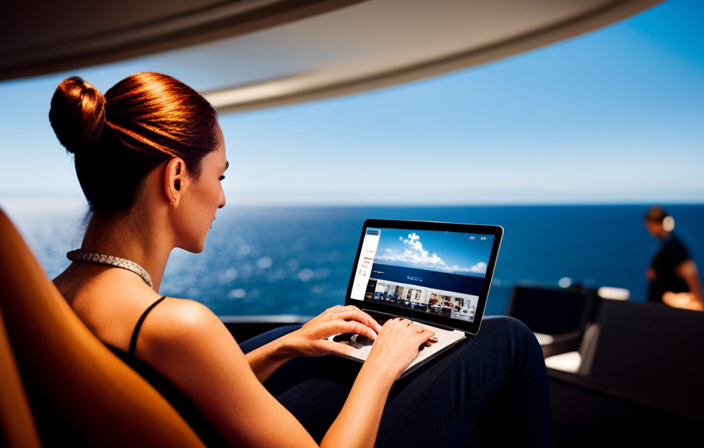Cruise Planning Tips
Worst Packing Mistakes For An Alaska Cruise

While I was on the deck of the cruise ship, gazing at the magnificent glaciers of Alaska, it hit me – my packing decisions were significantly off the mark.
The biting cold wind cut through my thin jacket, and I cursed myself for not bringing something warmer. And don’t even get me started on the summer clothes I packed for our stop in Seattle before heading to Alaska. It was a rookie mistake that I should have known better than to make.
But fear not, fellow travelers, for I have learned from my blunders and I am here to share with you the worst packing mistakes to avoid for an Alaska cruise.
From underpacking and having to scramble to buy heavier coats, to forgetting important documents and medication, I’ve experienced it all.
So join me as we delve into the do’s and don’ts of packing for an Alaska cruise, and make sure your trip is smooth sailing from start to finish.
Key Takeaways
- Packing a versatile raincoat is essential for unpredictable rainy weather on an Alaska cruise.
- Avoid underpacking and having to buy heavier coats by packing appropriately for the weather conditions.
- Be prepared for the possibility of unusually warm weather on a second cruise, even if the destination is typically cold.
- Don’t make the mistake of packing summer clothes for a trip to Seattle before an Alaska cruise.
What to Pack
I’ve learned from my previous experiences that packing the right items for an Alaska cruise is crucial, especially when it comes to having a versatile raincoat and not underpacking heavier coats in case of unexpected weather.
When it comes to packing essentials, it’s important to consider the unpredictable weather conditions in Alaska. A raincoat is a must-have item, as it will protect you from the frequent rain showers.
Additionally, it’s a good idea to pack layering clothing options, such as long-sleeved shirts, sweaters, and jackets, as temperatures can vary throughout the day. This will allow you to adjust your clothing according to the weather.
It’s also important to pack warm accessories like hats, gloves, and scarves to stay cozy in colder temperatures.
By packing smart and considering the climate, you’ll be prepared for any weather conditions during your Alaska cruise.
Weather Considerations
When considering the weather on an Alaska cruise, it’s important to pack versatile clothing options. The weather in Alaska can be unpredictable, so it’s crucial to be prepared for various conditions.
One of the packing essentials for an Alaska cruise is rain gear. A versatile raincoat is a must-have as it can protect you from the rain and also serve as an extra layer for warmth. Additionally, pack waterproof pants and waterproof shoes to keep your lower body and feet dry in case of heavy rain or wet excursions.
It’s also a good idea to pack layers such as sweaters, fleece jackets, and long-sleeve shirts that can be easily added or removed depending on the temperature. Don’t forget to pack a hat and gloves for colder days.
By packing these essential items, you’ll be ready to enjoy your Alaska cruise, rain or shine.
Tips for Disembarking
To ensure a smooth disembarking process, it’s important to set out your suitcase in the hallway before the cruise ends. This allows the cruise staff to collect and organize the luggage efficiently, making it easier for you to reunite with your belongings in the cruise terminal.
When it comes to packing essentials for an Alaska cruise, it’s crucial to consider the weather conditions. Bring a versatile raincoat to prepare for rainy weather, as Alaska is known for its unpredictable climate. Additionally, it’s advisable to pack layers of clothing to accommodate the changing temperatures.
To keep your luggage organized, pack an outfit for disembarkation day separately so that you can easily access it. Also, remember to keep important documents and medication with you, and cosmetics for the next morning.
By following these tips, you can ensure a hassle-free disembarking experience and enjoy the end of your cruise.
What are the packing mistakes to avoid for an Alaska cruise?
When preparing for an Alaska cruise, be mindful of prohibited items on cruises. Avoid packing candles, irons, and weapons, as they are not allowed on board. Additionally, refrain from bringing perishable food items, illegal substances, and drones. It’s best to review the cruise line’s guidelines to ensure a smooth journey.
Frequently Asked Questions
Are there any specific packing tips for families traveling on an Alaska cruise?
When packing for an Alaska cruise, it’s important for families to remember some essential items. Must-haves for kids include warm layers, waterproof gear, sturdy shoes, and motion sickness remedies. Don’t forget to pack sunscreen and insect repellent too!
How can I prevent my luggage from getting lost or misplaced during disembarkation?
To prevent my luggage from getting lost or misplaced during disembarkation, I always make sure to utilize luggage security and tracking systems. These systems provide peace of mind and help ensure that my belongings are safely reunited with me.
What are some common mistakes to avoid when packing for an Alaska cruise?
Common mistakes to avoid when packing for an Alaska cruise include underpacking for rainy weather, packing summer clothes for Seattle, and not bringing a versatile raincoat. Here are some packing tips to ensure a smooth trip.
Is it necessary to pack formal attire for dining on the cruise ship?
Yes, it is necessary to pack formal attire for dining on a cruise ship. Most cruise ships have a dress code for certain dining areas, which often includes formal nights. It’s important to check the specific dress code requirements for your cruise.
What are some essential items to include in a cruise survival kit for an Alaska cruise?
Some must-have items for an Alaska cruise survival kit include a versatile raincoat, warm layers, and proper footwear. It’s also important to pack essential documents, medication, and cosmetics for disembarkation day.
Meet Asra, a talented and adventurous writer who infuses her passion for exploration into every word she writes. Asra’s love for storytelling and her insatiable curiosity about the world make her an invaluable asset to the Voyager Info team.
From a young age, Asra was drawn to the power of words and their ability to transport readers to far-off lands and magical realms. Her fascination with travel and cultures from around the globe fueled her desire to become a travel writer, and she set out on a journey to turn her dreams into reality.
Cruise Planning Tips
Cruise Passport Requirements: What You Need To Know
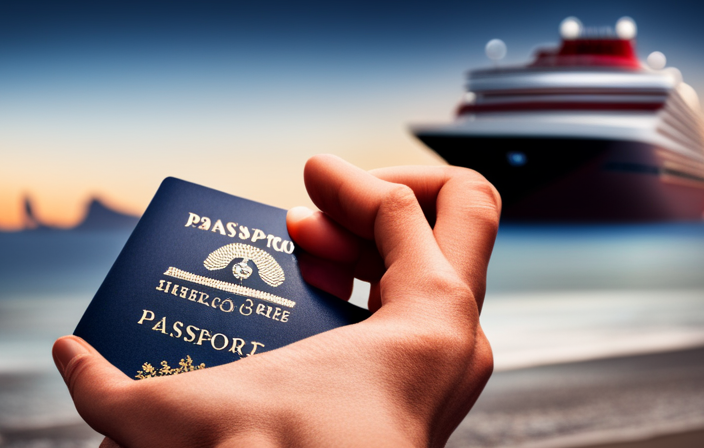
Starting a cruise is similar to embarking on an amazing journey, with the vast ocean becoming your playground and thrilling, uncharted destinations ready to be discovered by you.
But before you can embark on this nautical journey, there is one important factor to consider: passport requirements. As a seasoned traveler, I have learned that the rules surrounding passports can vary depending on the cruise’s departure location and itinerary.
While some cruises may only require a valid driver’s license and proof of citizenship, others necessitate a passport for international travel.
In this article, ‘Cruise Passport Requirements: What You Need to Know,’ I will guide you through the ins and outs of passport regulations, including exceptions for U.S.-based cruises, validity and expiration requirements, and additional documentation needed for certain ports.
So, grab your boarding pass, and let’s dive into the world of cruise passport requirements to ensure a smooth and hassle-free voyage.
Key Takeaways
- Passport is required for cruises departing from Europe, South America, Asia, Africa, Australia, Caribbean islands, Canadian homeports, and for sailing from one U.S. homeport and disembarking at a different one.
- Closed-loop sailings from U.S. homeports, defined as roundtrip from the same U.S. homeport and only visiting ports in the Western Hemisphere, do not require a passport.
- Government-issued photo ID and proof of citizenship can be used if no passport is available, but it is recommended to cruise with a passport for emergencies and during the pandemic.
- Passports for minors are valid for 5 years and some ports on closed-loop itineraries may still require passports for entry.
Cruise Passport Requirements:
I need to make sure I have a valid passport if I plan on going on a cruise departing from Europe, South America, Asia, Africa, Australia, the Caribbean islands, or Canadian homeports.
While there are some passport alternatives available, having a passport provides numerous benefits. Firstly, it allows for hassle-free travel to various destinations around the world. With a passport, I can easily explore different countries during the cruise without any restrictions.
Additionally, having a passport ensures a smooth boarding process, especially when sailing from one U.S. homeport and disembarking at a different one. It also serves as a valid form of identification during international travel and can be essential in case of emergencies.
Overall, having a passport offers peace of mind and allows for a more enjoyable and stress-free cruise experience.
Passport needed for international cruises
Traveling on an international cruise without the necessary documentation is like embarking on a journey without a map. It’s essential to have a valid passport when planning to set sail on an international cruise.
Here are some important points to consider regarding passport requirements:
-
The passport application process can be straightforward but requires some planning ahead. It involves filling out an application, providing supporting documents, and paying the appropriate fees.
-
Traveling with a passport offers numerous benefits. It serves as proof of identity and citizenship, allowing for hassle-free entry and exit at various ports of call. It also provides a sense of security and peace of mind, especially in case of emergencies or unexpected situations.
-
Having a passport enables you to explore and experience different cultures and destinations beyond the cruise ship. You can participate in shore excursions, visit local attractions, and enjoy a more immersive travel experience.
-
Lastly, a passport allows for flexibility and opens up opportunities for future travel. It is a valuable document that remains valid for ten years, making it a worthwhile investment for avid cruisers and travelers alike.
Exceptions for U.S.-based cruises
Erica Silverstein, a cruise and family travel expert, emphasizes the importance of understanding the exceptions for U.S.-based cruises. When it comes to cruising without a passport, there are both pros and cons to consider.
One major advantage is that select U.S.-based cruises do not require a passport, making it easier and more convenient for American travelers. This means you can embark on a cruise without the hassle and expense of obtaining a passport. However, it’s important to note that these cruises typically only visit ports within the Western Hemisphere and do not require international flights.
Additionally, some ports on closed-loop itineraries may still require passports for entry. It’s always recommended to check with the cruise line and government agencies to ensure you have the necessary documents for your specific itinerary.
Some cruise lines that offer U.S.-based cruises without passport requirements include Carnival Cruise Line and Royal Caribbean International.
Validity and expiration requirements
Valid passports are typically required to be valid for at least six months after arrival in many countries. It’s important to note that passport expiration requirements may vary depending on the destination.
When planning a cruise, it’s crucial to ensure that your passport will be valid for the entire duration of your trip and beyond. Renewing your passport can be a simple process, but it’s essential to give yourself plenty of time before your departure date. The passport renewal process usually involves completing an application, submitting necessary documentation, and paying the required fees.
Having a valid passport is not only important for international travel but also for emergencies that may arise during your trip. It’s always better to be prepared and have a valid passport on hand to avoid any potential complications or delays during your cruise journey.
Markdown Emotional Bullet List:
- Peace of mind knowing that you have a valid passport for your trip.
- Avoiding the stress and disappointment of being denied entry to a destination due to an expired passport.
- Ensuring a smooth and hassle-free travel experience by having all the necessary documentation in order.
Additional documentation for certain ports
When visiting certain ports during a cruise, it’s important to be aware that additional documentation may be required. In addition to a passport, you may need to have photo identification and meet specific visa requirements.
Some ports, like St. Petersburg, may require both a passport and a visa for entry. It’s crucial to check with the government agencies and your cruise line to understand the exact documentation needed for each port of call. Your cruise line may even handle the visa procurement for sea arrivals, making the process easier for you.
While it’s generally not necessary to bring your passport on shore excursions, there may be exceptions, especially if the excursion involves crossing borders. It’s always a good idea to bring an official photo ID when leaving the ship to ensure a smooth and hassle-free experience at the ports.
Can I Use My Passport as Identification to Purchase Drinks on a Cruise?
Yes, you can use your passport as identification to purchase drinks on a cruise. However, it’s important to be aware of the cruise drink costs and rules. Some cruises may require you to carry a cruise card for purchases, so it’s best to check with the cruise line beforehand.
Frequently Asked Questions
Can I go on a cruise without a passport if it is a closed-loop sailing?
Going on a cruise without a passport is like sailing on calm waters. If it’s a closed-loop sailing, you don’t need a passport. Just bring your official photo ID and proof of citizenship. Bon voyage!
Is a driver’s license sufficient for all U.S.-based cruises?
No, a driver’s license is not sufficient for all U.S.-based cruises. While it may be acceptable for closed-loop cruises within the Western Hemisphere, other cruises may require a passport or other forms of identification. Passport alternatives should be checked with the cruise line and government agencies.
Are there any exceptions for bringing a passport ashore during shore excursions?
Yes, there are exceptions for bringing a passport ashore during shore excursions. Some ports may require passports for entry, while others may accept alternative documents such as a government-issued photo ID or a photocopy of your passport.
How long is a passport valid for international travel on a cruise?
A passport is typically valid for international travel on a cruise for up to 10 years. However, it is important to check the expiration date before your trip and ensure that your passport is still valid. If it is expired or nearing expiration, you may need to apply for a passport renewal.
Are there any additional documentation requirements for certain ports during a cruise?
For certain ports during a cruise, additional documentation may be required. This can include proof of citizenship, such as a passport, for entry into those non-U.S. ports. It’s important to check with the government agencies and cruise line for specific requirements.
Claire, a creative soul with an unquenchable thirst for storytelling, is an integral part of the Voyager Info team. As a dedicated writer, she weaves captivating narratives that transport readers to enchanting cruise destinations and beyond.
Claire’s love affair with writing began at an early age when she discovered the magic of words and their ability to craft worlds and emotions. Her innate curiosity led her to explore various literary genres, but it was travel writing that truly captured her heart. Drawing inspiration from her own globetrotting adventures and encounters with diverse cultures, Claire embarked on a journey to become a travel writer par excellence.
Cruise Planning Tips
Benefits And Tips For Solo Cruising: Your Ultimate Guide
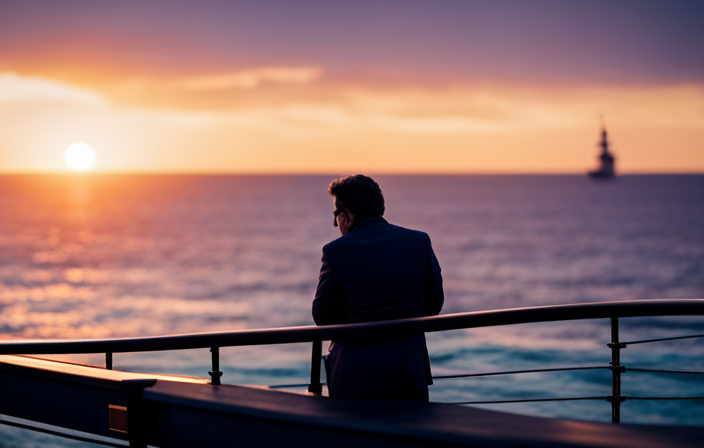
Embarking on a solo cruise is like starting a special personal journey, with the vast ocean as your partner and the ship serving as your sanctuary on the sea.
As someone who has experienced the freedom and excitement of solo cruising, I can attest to the countless benefits it offers. From the blissful relaxation of having uninterrupted alone time to the thrill of meeting new people from all walks of life, solo cruising truly has something for everyone.
But before you embark on this incredible journey, it’s important to know the ins and outs of solo cruising to ensure a safe and enjoyable experience. In this ultimate guide, I will share the benefits of solo cruising, the social aspects that make it so special, and some essential safety tips to keep in mind.
So grab your sunscreen and embark on a solo cruise, where the possibilities are as vast as the ocean itself.
Key Takeaways
- Solo cruising offers relaxation and alone time, as well as the opportunity to meet new people.
- Solo cruising means being on the ship alone, while single cruising refers to being unattached and potentially ready to mingle.
- Safety tips for solo cruising include being cautious, avoiding sharing cabin location, and not inviting strangers to your cabin.
- Some cruise lines offer solo cabins or studios for single travelers, which are priced for one and offer more reasonable fares than staying alone in double-occupancy cabins.
Benefits of Solo Cruising
I love solo cruising because it gives me the opportunity to relax and have some alone time, while also providing the chance to meet new people.
One of the main benefits of solo cruising is the relaxation it offers. Being on a cruise ship by yourself allows you to unwind and escape from the demands of everyday life. Whether you’re lounging by the pool, indulging in spa treatments, or simply enjoying the peacefulness of the open sea, solo cruising provides the perfect environment for relaxation.
In addition to relaxation, solo cruising also offers the opportunity to meet new people. It’s amazing how many connections you can make on a cruise ship. From meeting your cabin neighbors and bonding with your cabin stewards to making friends during dinner and participating in onboard activities, there are endless opportunities to socialize and make meaningful connections with fellow passengers.
Solo cruising allows you to step out of your comfort zone and engage with others, creating memories and friendships that can last a lifetime.
Social Aspects of Cruising
Meeting cabin neighbors and making friends during dinner are some of the social aspects that make cruising a great way to connect with others. One of the benefits of solo cruising is the opportunity to meet new people from all walks of life.
Whether you’re an outgoing extrovert or a more reserved introvert, there are plenty of ways to socialize on a cruise. If you’re staying in a solo cabin, you can still participate in daily onboard activities like parties, gameshows, and dance classes. Additionally, some cruise lines have dedicated singles lounges where you can mingle with other solo travelers.
Booking shore excursions directly with the cruise line is another great way to meet fellow passengers with similar interests. So, don’t worry about cruising alone – you’ll have plenty of chances to meet new people and make lasting connections.
Safety Tips for Solo Cruising
Staying cautious and treating solo cruising like traveling alone anywhere else is essential for ensuring your safety onboard the ship. Here are some safety tips to keep in mind:
-
Be aware of your surroundings and trust your instincts. If something doesn’t feel right, remove yourself from the situation.
-
Avoid volunteering that you’re traveling alone. It’s best not to draw attention to yourself.
-
Keep your cabin location private and avoid inviting strangers to your cabin. It’s important to maintain your privacy and security.
While safety is a priority, solo cruising also offers great opportunities to meet new people. Additionally, some cruise lines offer single supplements and discounts for solo travelers, making it more affordable to enjoy a solo adventure at sea. So, don’t be afraid to embark on a solo cruise and explore the world while making new friends along the way.
Frequently Asked Questions
Are there any age restrictions for solo cruising?
There are typically no age restrictions for solo cruising. Cruise lines welcome travelers of all ages to enjoy the benefits of cruising alone. It’s a great opportunity for relaxation, meeting new people, and having a memorable vacation.
What are some popular destinations for solo cruisers?
Top solo cruising destinations include the Caribbean, Mediterranean, Alaska, and Northern Europe. The best time to go solo cruising is during shoulder seasons when there are fewer crowds and better rates.
Can solo cruisers participate in onboard activities and entertainment?
Absolutely! Solo cruisers can fully participate in onboard activities and entertainment. The benefits of solo cruising include independence and freedom, while tips for solo cruisers focus on making new friends onboard. So, join in and enjoy the experience!
Are there any specific cruise lines that cater to solo cruisers?
Yes, there are several cruise lines that cater to solo cruisers. Royal Caribbean, Norwegian, MSC, Celebrity, and Cunard offer solo cabins on their newest vessels, providing advantages for solo cruising including more reasonable fares and opportunities to meet fellow solo cruisers.
How can solo cruisers stay connected with family and friends back home?
To stay connected on a solo cruise, I use technology options like onboard Wi-Fi, texting apps, and video calls. I also manage homesickness by staying busy with onboard activities, making new friends, and keeping in touch with loved ones through regular communication.
Claire, a creative soul with an unquenchable thirst for storytelling, is an integral part of the Voyager Info team. As a dedicated writer, she weaves captivating narratives that transport readers to enchanting cruise destinations and beyond.
Claire’s love affair with writing began at an early age when she discovered the magic of words and their ability to craft worlds and emotions. Her innate curiosity led her to explore various literary genres, but it was travel writing that truly captured her heart. Drawing inspiration from her own globetrotting adventures and encounters with diverse cultures, Claire embarked on a journey to become a travel writer par excellence.
Cruise Planning Tips
Choosing Your Cruise Cabin: Balcony Or Oceanview Retreat?

The world is yours to explore, so why not do it in style aboard a cruise? When planning my upcoming voyage across the ocean, I am faced with the decision of selecting either a balcony cabin or an oceanview stateroom. Each option offers its own advantages and characteristics, ultimately coming down to individual preference.
Balcony cabins offer the luxury of a private outdoor space, complete with a small veranda and floor-to-ceiling sliding glass doors. They provide a secluded haven where I can relax and take in the breathtaking views.
On the other hand, oceanview cabins offer plenty of natural light through their rectangular picture windows or round portholes, allowing me to soak in the beauty of the ocean from the comfort of my room.
Factors such as price, desire for outdoor space, location on the ship, and personal preferences for privacy or natural light play a significant role in making this decision. So, let’s dive into the details and explore the world of cruise cabins, helping you choose between a balcony or an oceanview retreat.
Key Takeaways
- Balcony cabins provide private outdoor space and stunning views.
- Oceanview cabins offer natural light and picturesque ocean views.
- Balcony cabins are more expensive, while oceanview cabins are a more affordable option.
- The choice between the two depends on personal preferences and budget.
Balcony Cabin Features
I love how balcony cabins provide a small, private veranda with floor-to-ceiling sliding glass doors, making it the perfect retreat on a cruise ship. The pros of balcony cabins are numerous.
Firstly, the floor-to-ceiling sliding glass doors allow for plenty of natural light to fill the cabin, creating a bright and airy atmosphere.
Secondly, the private veranda offers a secluded outdoor space where you can enjoy the fresh sea breeze and breathtaking views. It’s a great spot to relax, read a book, or enjoy a romantic dinner.
However, there are a few cons to consider. Balcony cabins are generally more expensive than oceanview cabins, so they might not fit everyone’s budget. Additionally, if you’re prone to seasickness, being on an upper deck and closer to the ship’s motion might not be ideal.
Despite these considerations, the benefits of having a balcony on a cruise are undeniable.
Oceanview Cabin Features
Located on lower decks and throughout the ship, oceanview cabins offer natural light and picturesque views of the surrounding ocean, creating a serene and tranquil atmosphere for passengers. When choosing the right cabin, there are several oceanview cabin benefits to consider:
-
Natural light: Oceanview cabins allow sunlight to filter in, brightening up the room and creating a warm and inviting ambiance.
-
Picturesque views: With rectangular picture windows or round portholes, passengers can enjoy stunning views of the ocean, whether it’s the vast blue horizon or breathtaking sunsets.
-
Lower prices: Oceanview cabins are generally cheaper than balcony cabins, making them a great option for budget-conscious travelers who still want to experience the beauty of the ocean.
-
Availability throughout the ship: Unlike balcony cabins that are more common on newer ships, oceanview cabins can be found on lower decks and throughout the ship, providing more options for cabin location.
Factors to Consider
When considering factors for selecting a cabin on a cruise ship, it’s important to take into account personal preferences for privacy or the desire for natural light.
One of the factors to consider is the price comparison between balcony and oceanview cabins. Balcony cabins are generally more expensive due to the added feature of a private veranda, while oceanview cabins are cheaper and provide natural light through windows.
Another important factor is the location of the cabin on the ship. Balcony cabins are usually located on upper decks and midship, offering a prime location with easy access to amenities. On the other hand, oceanview cabins can be found on lower decks and throughout the ship, providing a variety of options depending on one’s preference.
Ultimately, the decision between a balcony or oceanview cabin depends on personal preferences and budget.
Frequently Asked Questions
Are there any additional perks or amenities that come with a balcony cabin?
Ah, the allure of a balcony cabin. Yes, there are additional perks and amenities that come with it. Worth the extra cost? Well, it depends on your preferences. Let’s compare the value for money between a balcony cabin and an oceanview cabin.
Can you request a specific location or deck for your balcony or oceanview cabin?
Yes, you can request a specific location or deck for your balcony or oceanview cabin. When booking your cruise, you can let the cruise line know your preferred location for your cabin, and they will do their best to accommodate your request.
Are there any restrictions on using the balcony or opening the sliding glass doors?
There are safety measures and noise restrictions when it comes to using the balcony or opening the sliding glass doors on a cruise ship. These measures ensure the safety of passengers and minimize disturbances to other guests onboard.
Are there any cabins that offer a combination of balcony and oceanview features?
Yes, there are cabins that offer a combination of balcony and oceanview features. These cabins have floor-to-ceiling sliding glass doors like balcony cabins, but instead of a private veranda, they have a large picture window for ocean views.
Can you upgrade from an oceanview cabin to a balcony cabin once onboard the ship?
Yes, you can upgrade from an oceanview cabin to a balcony cabin once onboard the ship. The cost of the upgrade will depend on availability and the specific cruise line’s pricing policies.
Meet Asra, a talented and adventurous writer who infuses her passion for exploration into every word she writes. Asra’s love for storytelling and her insatiable curiosity about the world make her an invaluable asset to the Voyager Info team.
From a young age, Asra was drawn to the power of words and their ability to transport readers to far-off lands and magical realms. Her fascination with travel and cultures from around the globe fueled her desire to become a travel writer, and she set out on a journey to turn her dreams into reality.
-

 Cruise FAQs3 days ago
Cruise FAQs3 days agoHow To Turn On Cruise Control Tesla Model 3
-

 Cruise FAQs3 months ago
Cruise FAQs3 months agoWhat Is The Weather Like On A Transatlantic Cruise In April
-

 Cruise FAQs3 days ago
Cruise FAQs3 days agoHow To Set Cruise Control Tesla Model Y
-

 Cruise FAQs3 months ago
Cruise FAQs3 months agoHow to Contact Someone on a Carnival Cruise Ship
-
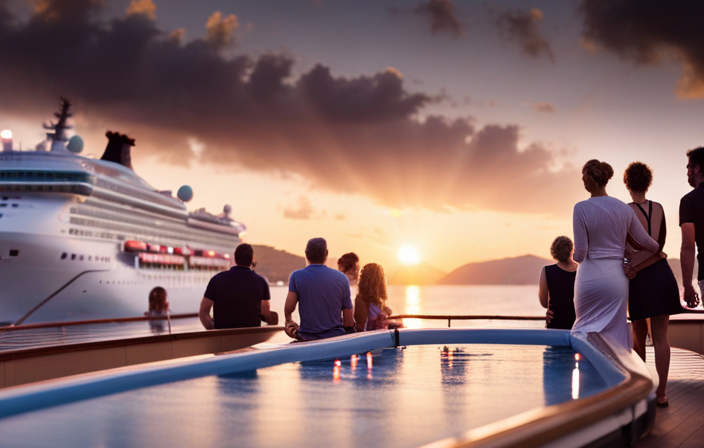
 Cruise Lines3 months ago
Cruise Lines3 months agoWhat Is The Average Age Of Passengers By Cruise Line
-

 Onboard Experience1 week ago
Onboard Experience1 week agoFinding Deals On Unsold Cruise Cabins: Tips And Strategies
-
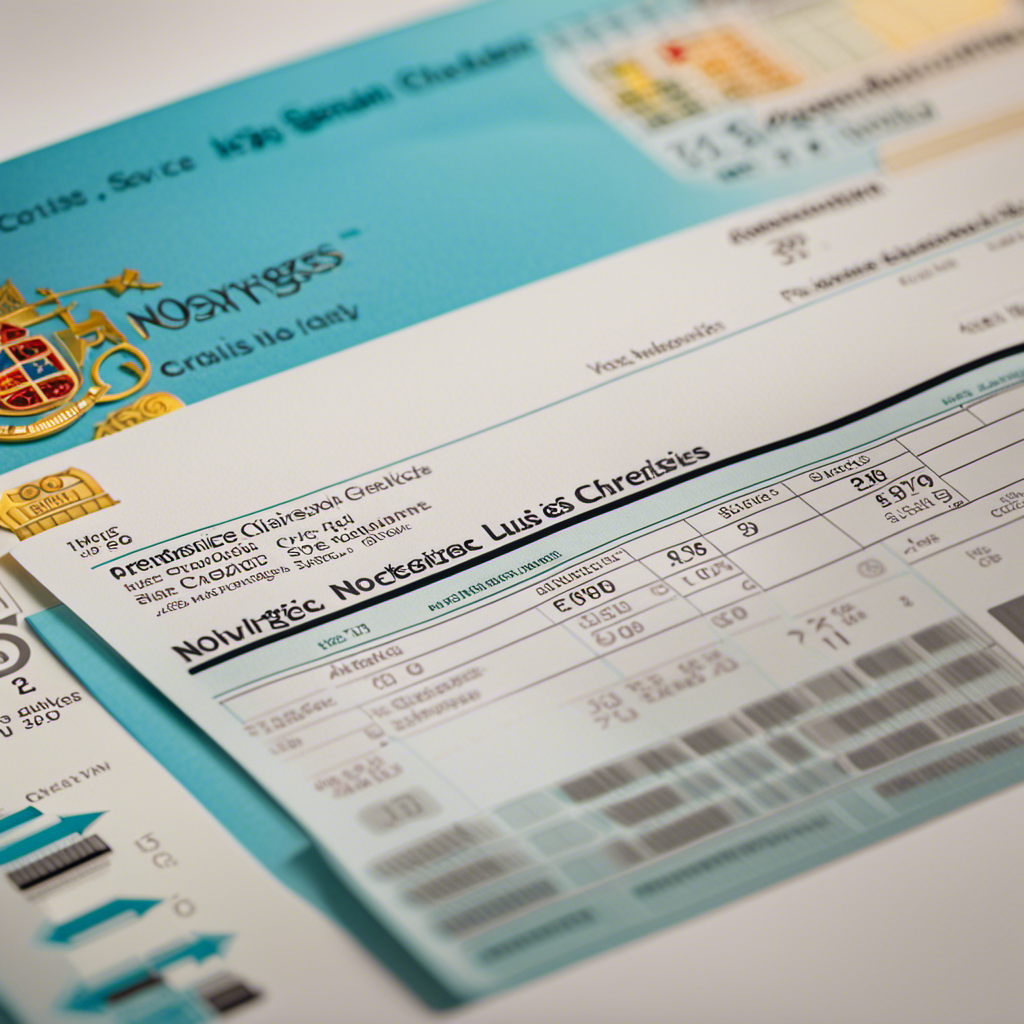
 Cruise Lines3 months ago
Cruise Lines3 months agoDecoding Norwegian Cruise Line’s Gratuities and Service Charges
-
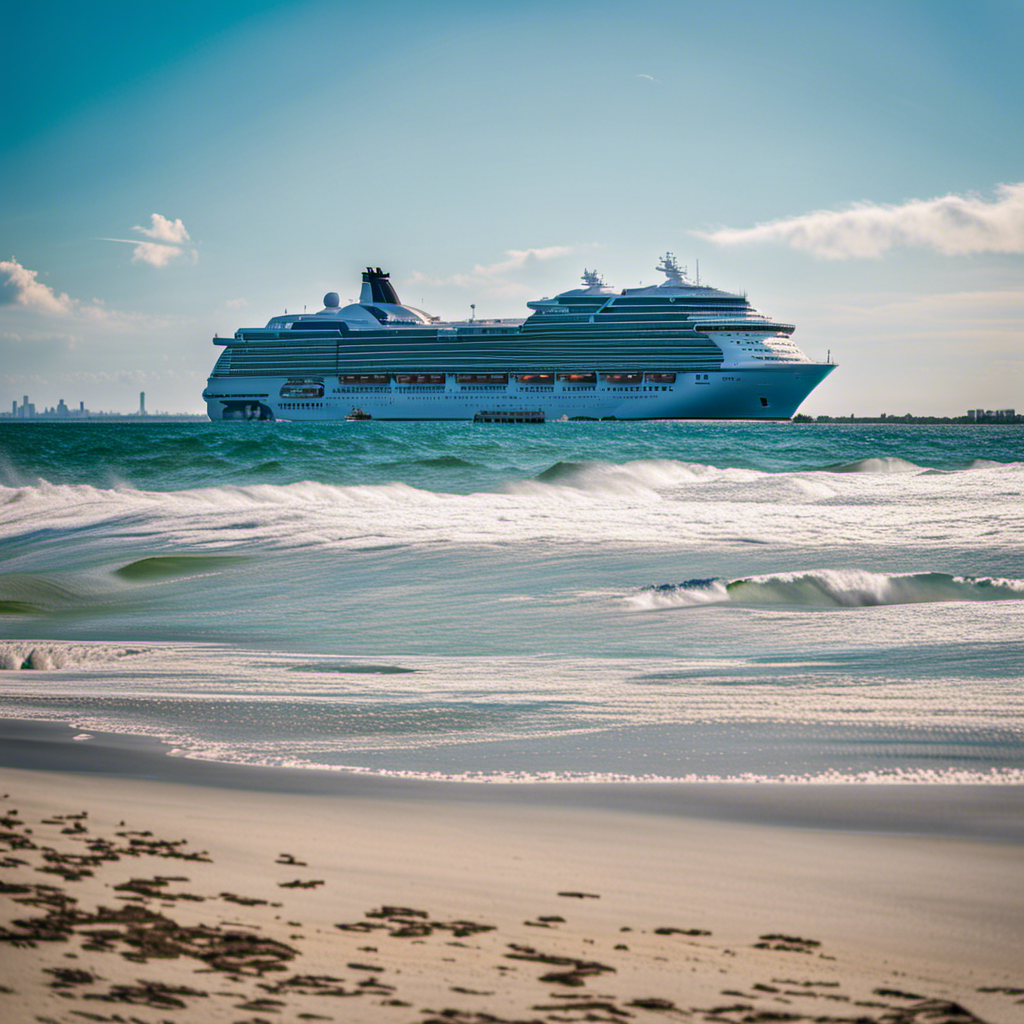
 Cruise Lines3 months ago
Cruise Lines3 months agoWhat Cruise Lines Depart From North Carolina








